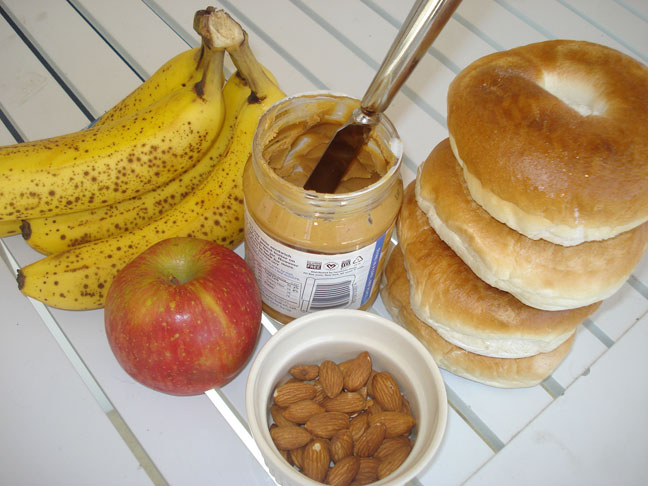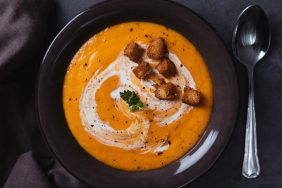We typically crave foods higher in fat, in addition to spending more time indoors being less active. Properly fueling your body for winter weather will allow you to be more committed to—and effective—in your workouts.
To have the energy you need to perform well in any climate, you have to fuel your body well. Colder months often require an extra dose of dedication to continue the fitness routine when the bed is warm and the air is cold. Additionally, we feel hungrier in winter months because a drop in body temperature stimulates the appetite. Eating generates heat, known as thermogenesis, helping to fuel the “internal fire”, increasing our desire to eat when we feel cold.
Group Nutrient-Dense Foods for Sustainable Energy
We don’t necessarily require more calories in winter to fuel our bodies. We simply crave foods higher in fat and calories as a response to the drop in body temperature. Choosing the right foods will not only prevent weight gain in winter, it will also give you the premium, “high-octane” ingredients your body requires. Try grouping food items to enhance your nutrition. Think of pairing protein with whole grains (turkey on wholegrain bread), as well as fibrous fruits and vegetables (with spinach and sliced apples). A bagel in the morning will give you necessary carbohydrates for energy, but with the addition of a scrambled egg, mushrooms, and sliced tomatoes, your meal will better sustain your energy requirements. Include a grilled source of protein (tofu, chicken, fish) to a salad for lunch as a more balanced meal. Add peanut butter to a banana as a healthy and satisfying snack.

Eat More Fiber to Feel Full Longer
Because we feel hungrier when it’s cold outside, it is important to eat smart. Rather than eating additional calories, choose foods that are high in fiber to help keep you satisfied longer. Produce available all winter long such as carrots, beets, potatoes, blood oranges, and bananas provide fiber and essential vitamins to keep you motivated in the gym. Steaming lentil and vegetable soups are fiber-dense, and the heat from warm foods helps contribute to eating’s thermogenesis, warming you up faster. This may help control the amount of food you are eating, curbing the desire to eat more.
Eat at Regular Intervals throughout the Day
By eating small, balanced meals every three to four hours, you will maintain your energy level. Aim to eat the majority of your calories during the most active part of your day. Breakfast, a midmorning snack, and lunch are your main power sources if you tend to exercise in the earlier part of your day; skip on dinner’s calories, instead. Consume the bulk of your daily calories where you will utilize them the most to help increase energy and get your workout done, regardless of what the thermometer reads.
Listen to Your Body’s Message of Hunger
Hunger is the most basic way your body tells you it needs fuel. Don’t ignore what your body is communicating. If you are not eating enough, you will be left feeling sleepy and deprived. This may cause you to be more susceptible to binge eating, or consuming foods with less nutritional merit. Eat when you are hungry, and give into what you crave occasionally. When you adhere to a regular exercise program, most foods can be enjoyed in moderation without health consequences.
A healthy diet is the foundation of any fitness program. You cannot expect your body to perform well in any climate with compromised nutrition, particularly colder weather when your body is craving additional calories. Do you have a favorite winter meal or snack that keeps you motivated? Share your ideas with fellow moms here.








